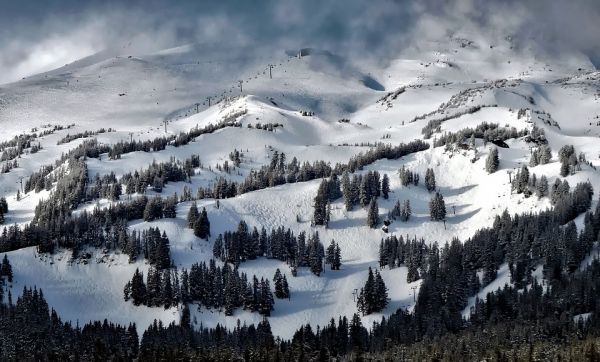With warming temperatures, average snowfall frequency is estimated to decline across the Pacific Northwest by 2100 — and at a faster rate if greenhouse emissions are not reduced, according to a new Portland State University study.
Researchers in PSU's Climate Science Lab — postdoctoral scholar Arielle Catalano, geography professor and climate scientist Paul Loikith and graduate student Christina Aragon — looked at projected change in the number of snow days versus rain days at 157 SNOTEL stations in Oregon, Washington and Idaho. SNOTEL, or snowpack telemetry network, sites are often used to monitor water availability in mountainous regions and provide an observational baseline for defining snowfall. Using climate model projections, changes in the ratio of snow days to rain days are estimated relative to observations at these stations.
Catalano said that calculating changes at locations used for monitoring snowfall across the mountainous Northwest can provide information at scales relevant to those monitoring and managing water resources.
In the Northwest, snowpack acts as a natural reservoir, recharging groundwater and providing water throughout the drier summer months. Snowfall impacts water supply, which can affect agriculture, wintertime flooding and recreational activities such as skiing and boating.
Read more at Portland State University
Photo Credit: 12019 via Pixabay


